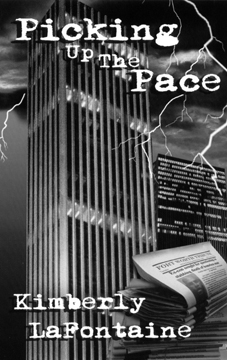 ‘Picking Up The Pace’ is the first novel by Kimberly LaFontaine, the pen name of a real-life correspondent for the ‘Fort Worth Star-Telegram.’
‘Picking Up The Pace’ is the first novel by Kimberly LaFontaine, the pen name of a real-life correspondent for the ‘Fort Worth Star-Telegram.’
|
|
A D V E R T I S E M E N T
|
|
|
|
A D V E R T I S E M E N T
|
|
Bi-Curious?
While digging into a serial murder case in a debut novel, a Fort Worth reporter contemplates her sexuality.
By DAN MCGRAW
No one knows what makes a good novel, but even the most experimental storytellers must meet two main criteria: plot and character development. The characters must be believable, and the plot must be driven by the characters’ reactions.
Kimberly LaFontaine is the pen name of an Arlington writer whose first novel, Picking Up The Pace, has just been published. A real-life correspondent for the Fort Worth Star-Telegram, LaFontaine is openly gay and has announced on her web site that she will marry her girlfriend next year. She’s said she doesn’t use the pseudonym to hide her lifestyle but to keep her journalism and fiction separate.
Funny, because LaFontaine has said that the novel is based on a lot of her own experiences here in town, including but not limited to her friendship with Samuel Jarnigan Lea, a gay man who was found murdered in Arlington a few months ago, right after the book was published. He served as the basis for a character named Jimmy, according to the book’s acknowledgments.
Even weirder is that Picking Up The Pace’s main character is a newspaper reporter whose life is changed dramatically by violence.
The novel follows the life of Angie Mitchell, a young “hot-shot reporter” who finds herself covering boring city hall for the fictional Fort Worth Tribune. Her editor moves her to the crime beat, and she latches onto a story in which homeless people are being mysteriously murdered. Along the way, Angie’s boyfriend leaves her, and the reporter comes to grips with her attraction to a lesbian rock singer, Lauren Lucelli.
The book takes two paths simultaneously: Angie spends a lot of time thinking about whether she’s gay, and, at work, she digs into the homeless murder cases, ultimately finding herself in the middle of a crime drama whose tendrils stretch all the way to the upper floors of city hall.
LaFontaine’s writing is decent; it’s not arty or pretentious but simple and easy to follow, which lets the book move along at a good clip. The disorientation comes in the form of poor character development and an outrageously unbelievable plot.
The problem with the main characters is that we don’t learn much about them. They don’t have any negative qualities: Angie is trying to save homeless people through her journalism, Lauren is a former Peace Corps volunteer who wants to get back to teaching Africans to read, and Jimmy is the happy-go-lucky gay buddy who seemingly cares only about the two women hooking up, even though he himself isn’t getting any action.
Most real people, with fixations and addictions, can’t compare to LaFontaine’s angels. The most we learn about Lauren, for example, is that on one occasion she wears “skin-tight black leather pants and a black muscle-sleeved top, her hair loose.” Angie duly “note[s] that she looked almost dangerous.” Fiction Writing 101: If your idea of character development amounts to merely listing what he or she wears, you need to find a new creative outlet.
The only aspect of the book that LaFontaine handles well enough is the tension between Angie and Lauren and Angie and her confusion, mainly because the writer treats her characters as normal folks trapped in very earthly circumstances, not heavenly creatures. That’s still not enough to deliver this novel — or its readers — from purgatory.
 Email this Article...
Email this Article...

